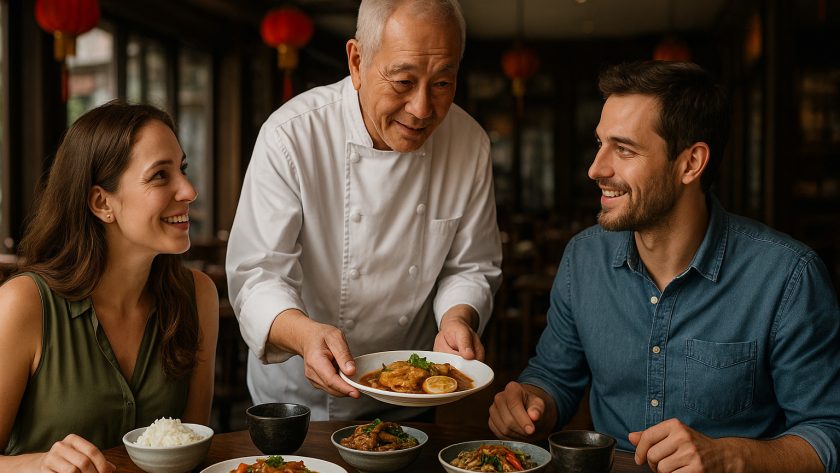Traveling often means checking into hotels, booking tours, and ticking off landmarks. But the true character of a place is found in its food. The question isn’t just what to eat, but how to eat like someone who lives there. Hotel concierges know this better than anyone. They’ve watched travelers either strike gold with unforgettable meals—or end up with overpriced, uninspired fare near tourist hotspots.
So how do you consistently eat well while immersing yourself in local culture? These are the tactics concierges actually recommend.
1. Ask for More Than a Name
Concierges receive requests like “Where should I eat?” all day. The right question isn’t just where—but why. Ask for:
- What dish the locals order at that place
- When to go to avoid tourist times
- If you’ll need to book ahead or just show up
- What to skip on the menu
This changes the conversation from giving directions to providing a personal food itinerary.
2. Use “Second-Favorite” Logic
Locals don’t always dine at the #1 rated place in town. Often, it’s the second or third place they trust for consistency, shorter waits, or a quieter vibe. When a concierge suggests the city’s most famous dim sum or pasta joint, follow up with: “What’s your second choice if that one’s full?” You’ll often end up somewhere with the same flavors but half the crowd.
3. Walk, Don’t Ride
Neighborhood gems are rarely parked next to major attractions. Walking a few blocks from the main drag usually means cheaper prices, authentic menus, and fewer laminated tourist menus with flags. Ask the concierge for a walking route that passes a few lesser-known food stops.
You don’t have to eat at all of them—just knowing where the good smells live is half the fun.
4. Order What the Kitchen Makes Best
Once you’ve chosen your table, ask for the signature dish. Not the most expensive. Not the trendiest. The one they’re proud of. Many restaurants have a narrow specialty—grilled fish with chili oil, handmade noodles with lamb, slow-roasted pork belly. If you’re handed a long, generic menu, ask your server directly what they recommend to locals.
To avoid menu confusion, use tools like FoodMenu.Guide before your trip. It can help you preview typical dishes in different cities, which makes it easier to spot tourist menus and avoid poor choices.
5. Timing Affects Taste
Tourist traps serve the same food all day. Real places don’t. Morning is for porridge or market bread. Lunch brings out workers’ favorites—no-frills, fast-cooked meals with bold flavors. Dinner is slower, more social, and more experimental.
Concierges can suggest time-specific eats that may not even be available on all-day menus. Think of night market skewers in Taipei or post-midnight noodles in Osaka. Timing isn’t just about beating the queue; it changes what’s on the table.
6. Markets Are Half the Meal
You don’t have to cook to enjoy a city’s market. Visit with your concierge’s notes in hand: which vendors are best, what time the fish is fresh, which stalls give free samples without pressure. Markets give you a snapshot of the local palate—what people are actually buying for their homes.
Use what you see as a filter for what to order later. If everyone’s buying green mango or salted duck eggs, look for those on menus around town.
7. Don’t Chase Stars—Chase Stories
Guidebook recommendations often reflect what’s internationally recognized. But concierges know that the stories behind the food matter more. They’ll point you toward:
- Family-run restaurants with decades-old recipes
- Street carts that built a reputation through consistency
- Chefs who trained locally and don’t try to impress tourists
Ask, “Where would you eat on your day off?” It reframes the entire conversation.
8. Know the Red Flags of Tourist Dining
Concierges warn against:
- Places with more English than local language on menus
- Spots aggressively touting menus outside
- Multiple cuisines under one roof (Thai + Italian + Sushi = Run)
- Photos of every dish—especially if the food looks suspiciously perfect
One tip: if the restaurant has been empty every time you pass by, there’s probably a reason.
9. Learn Five Local Words
You don’t need to speak the language fluently. But learning how to say:
- “What’s your favorite dish?”
- “Do you recommend something local?”
- “Thank you”
- “Spicy or not spicy?”
- “Delicious!”
…goes a long way. Not only do you get better treatment, but staff often open up with suggestions when they see you’re trying.
10. End with Dessert—Even if You’re Full
Locals don’t skip dessert. It might be simple—fresh fruit with salt, sticky rice and coconut, or a humble baked tart—but it matters. Concierges often know where the best dessert can be found, and sometimes it’s nowhere near your dinner stop. Take a walk. Make the detour. Let your meal end the way it’s meant to.
Eating like a local doesn’t mean sacrificing comfort or quality. It means making deliberate choices: asking better questions, walking a few blocks farther, and paying attention to the small clues that separate a meal from an experience. The best concierges understand this, and now—so do you.

